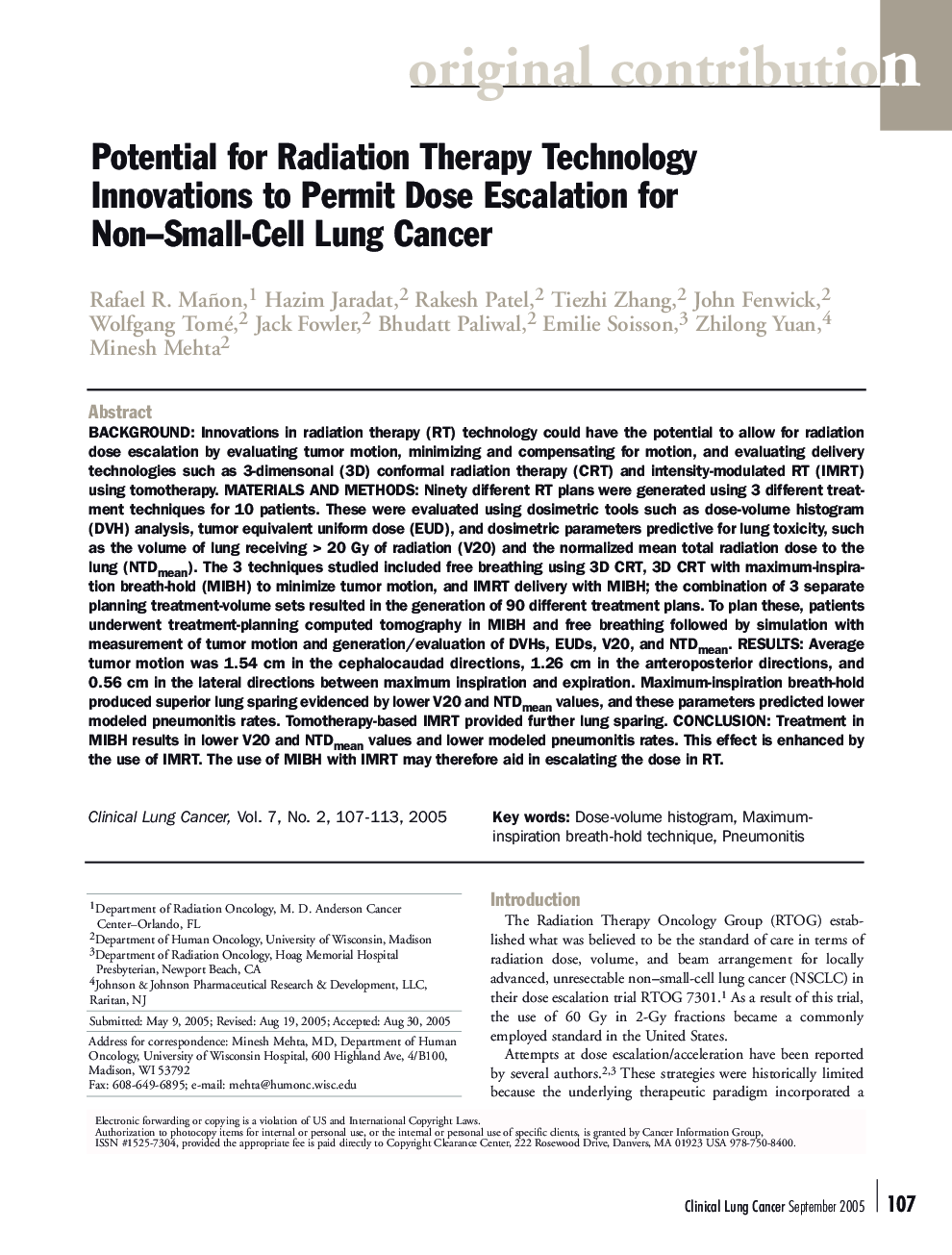| کد مقاله | کد نشریه | سال انتشار | مقاله انگلیسی | نسخه تمام متن |
|---|---|---|---|---|
| 9093955 | 1149664 | 2005 | 7 صفحه PDF | دانلود رایگان |
عنوان انگلیسی مقاله ISI
Potential for Radiation Therapy Technology Innovations to Permit Dose Escalation for Non-Small-Cell Lung Cancer
دانلود مقاله + سفارش ترجمه
دانلود مقاله ISI انگلیسی
رایگان برای ایرانیان
موضوعات مرتبط
علوم پزشکی و سلامت
پزشکی و دندانپزشکی
بیهوشی و پزشکی درد
پیش نمایش صفحه اول مقاله

چکیده انگلیسی
BACKGROUND: Innovations in radiation therapy (RT) technology could have the potential to allow for radiation dose escalation by evaluating tumor motion, minimizing and compensating for motion, and evaluating delivery technologies such as 3-dimensonal (3D) conformal radiation therapy (CRT) and intensity-modulated RT (IMRT) using tomotherapy. MATERIALS AND METHODS: Ninety different RT plans were generated using 3 different treatment techniques for 10 patients. These were evaluated using dosimetric tools such as dose-volume histogram (DVH) analysis, tumor equivalent uniform dose (EUD), and dosimetric parameters predictive for lung toxicity, such as the volume of lung receiving > 20 Gy of radiation (V20) and the normalized mean total radiation dose to the lung (NTDmean). The 3 techniques studied included free breathing using 3D CRT, 3D CRT with maximum-inspiration breath-hold (MIBH) to minimize tumor motion, and IMRT delivery with MIBH; the combination of 3 separate planning treatment-volume sets resulted in the generation of 90 different treatment plans. To plan these, patients underwent treatment-planning computed tomography in MIBH and free breathing followed by simulation with measurement of tumor motion and generation/evaluation of DVHs, EUDs, V20, and NTDmean. RESULTS: Average tumor motion was 1.54 cm in the cephalocaudad directions, 1.26 cm in the anteroposterior directions, and 0.56 cm in the lateral directions between maximum inspiration and expiration. Maximum-inspiration breath-hold produced superior lung sparing evidenced by lower V20 and NTDmean values, and these parameters predicted lower modeled pneumonitis rates. Tomotherapy-based IMRT provided further lung sparing. CONCLUSION: Treatment in MIBH results in lower V20 and NTDmean values and lower modeled pneumonitis rates. This effect is enhanced by the use of IMRT. The use of MIBH with IMRT may therefore aid in escalating the dose in RT.
ناشر
Database: Elsevier - ScienceDirect (ساینس دایرکت)
Journal: Clinical Lung Cancer - Volume 7, Issue 2, September 2005, Pages 107-113
Journal: Clinical Lung Cancer - Volume 7, Issue 2, September 2005, Pages 107-113
نویسندگان
Rafael R. Mañon, Hazim Jaradat, Rakesh Patel, Tiezhi Zhang, John Fenwick, Wolfgang Tomé, Jack Fowler, Bhudatt Paliwal, Emilie Soisson, Zhilong Yuan, Minesh Mehta,